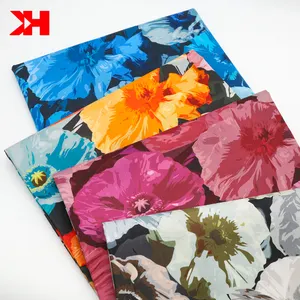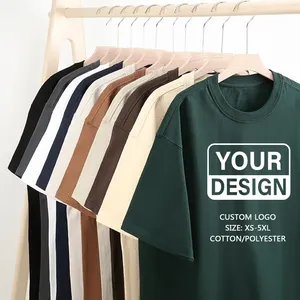(759965 products available)


























































































































































































































Cotton is a natural fiber that comes from the cotton plant's seed pods. It's known for its softness, breathability, and versatility, making it ideal for various clothing and textile applications. Here are some of the different types of cotton:
Upland Cotton
This is the most common type of cotton, accounting for about 90% of the world's production. Upland cotton has short to medium staple lengths and is known for its versatility and adaptability to various climates. It produces a fiber that is soft and fluffy, making it ideal for a wide range of applications, including clothing, textiles, and industrial uses. Upland cotton is primarily grown in the United States, Mexico, and parts of Central America.
Pima Cotton
It is a premium type of cotton known for its extra-long staple (ELS) fibers. These fibers are longer than those of Upland cotton, resulting in a smoother, stronger, and more lustrous fabric. Pima cotton is often used in high-end clothing, bed linens, and towels because of its softness and durability. It's primarily grown in the United States, Peru, and Australia. Pima cotton is also resistant to fraying, fading, and wrinkles, making it a popular choice for embroidered and printed designs.
Egyptian Cotton
This is another type of ELS cotton, renowned for its exceptional quality. Grown along the Nile River, Egyptian cotton produces long, silky fibers that create a luxurious and smooth fabric. It's often considered one of the best types of cotton for bed linens and upscale clothing because of its softness and ability to resist fading and wear over time. Egyptian cotton is classified into different grades, with higher grades offering superior fiber quality and fabric performance.
Sea Island Cotton
This is a distinguished type of cotton known for its unique growing conditions. It is cultivated in the Caribbean islands, particularly the Sea Islands, as well as parts of the southeastern United States. Sea Island cotton features exceptionally long and silky fibers, which contribute to its hallmark qualities of softness, strength, and lustrous appearance. These characteristics make it highly sought after for premium textiles and clothing, including dress shirts and luxury garments. Its natural resilience against fraying and fading further enhances its appeal in high-end markets.
Organic Cotton
This is produced using sustainable farming practices that avoid synthetic pesticides and fertilizers. Organic cotton preserves the environment and supports biodiversity by promoting healthy soil and ecosystem balance. Its fibers are as soft and breathable as conventional cotton, making it a popular choice for eco-conscious consumers. Organic cotton is often used in clothing, home textiles, and organic cotton paper products. Additionally, it is non-toxic and hypoallergenic, making it suitable for sensitive skin and allergies.
Wild Cotton
This refers to naturally occurring cotton plants that grow in their native habitats without cultivation. These cotton plants produce naturally developed seed fibers, often shorter and less consistent than cultivated varieties. Wild cotton can be found in regions like the Americas, Africa, and parts of Asia. While the fibers are sometimes used locally for textiles, they may not meet the same quality standards as commercially cultivated cotton. Additionally, the natural colors and characteristics of wild cotton fibers can vary significantly based on their growing conditions and plant species.
The design of cotton fabrics varies widely, reflecting the versatility of the fiber and the different aesthetic and functional requirements of end products. Here are some key design elements to consider:
Textured Designs
Cotton is a versatile fabric that is available in a variety of textures to suit different styles and uses. Textured cotton fabrics such as cotton sateen, velveteen, and seersucker have a distinct feel and appearance. Sateen has a smooth, glossy surface, while velveteen is soft and plush. Seersucker has a puckered, crinkled texture that is both lightweight and wrinkle-resistant. These textured designs add depth and visual interest to garments and home textiles, making them more sophisticated and appealing.
Patterned Designs
Patterned cotton fabrics feature a wide range of prints and weaves. These include florals, stripes, checks, and abstract designs. Printed cotton fabrics have patterns applied through techniques like screen printing, digital printing, or block printing. Woven designs are created by interlacing different colored threads. Cotton poplin is known for its crisp feel and is often used for shirts and dresses. Cotton sateen has a smooth, lustrous finish and is commonly used for sheets and pillowcases.
Dyed Designs
Dyed cotton fabrics are available in a vast spectrum of colors. These are achieved through various dyeing techniques such as piece dyeing, yarn dyeing, and batik dyeing. Piece dyeing involves dyeing the finished fabric, while yarn dyeing dyes the individual threads before weaving. Batik dyeing uses wax-resist techniques to create intricate patterns. Dyed cotton is prized for its colorfastness and versatility, making it suitable for a wide range of applications from clothing to home decor.
Embroidered Designs
Embroidered cotton fabrics feature intricate needlework patterns on the fabric surface. These designs can range from simple motifs to complex scenes and are created using various embroidery techniques. These include cross-stitch, satin stitch, and machine embroidery. Embroidered cotton is often used for blouses, dresses, table linens, and quilts. It adds a touch of elegance and craftsmanship to any garment or home textile, making it a favorite for both casual and formal settings.
Appliqued Designs
Appliqued cotton fabrics have fabric shapes or designs sewn onto the base fabric, creating a raised, textured effect. This technique allows for the creation of bold, graphic patterns. For instance, flowers, animals, or abstract shapes. Often contrasting fabrics are used for the applique pieces. This adds visual interest and depth to the design. Appliqued cotton is commonly used for quilts, cushions, and decorative wall hangings, as well as for garments with a playful, whimsical style.
Cotton fabric is a material that is used to make various clothes. It is a highly versatile material that can be styled in numerous ways. Below are five wearing and matching suggestions for cotton fabric.
Q1: What are the characteristics of cotton fabric?
A1: Cotton fabric is known for its softness, breathability, and versatility. It is absorbent, hypoallergenic, and suitable for sensitive skin. Cotton's natural fibers provide comfort and regulate temperature well, making it ideal for various climates and uses.
Q2: What are the advantages of using cotton?
A2: The advantages of using cotton include its softness, breathability, and hypoallergenic properties. Cotton is versatile and used in various applications, from clothing to home textiles and industrial products. Its natural fibers are biodegradable and sustainable, making cotton an eco-friendly choice.
Q3: What is the significance of cotton in clothing?
A3: Cotton is significant in clothing for its comfort and versatility. It is suitable for various skin types and is used in casual and formal wear. Cotton's ability to wick moisture away and regulate body temperature makes it an excellent choice for all seasons.
Q4: What is the importance of cotton in daily life?
A4: The importance of cotton in daily life is immense. It is used in clothing, bed linens, towels, and various household textiles. Its hypoallergenic properties make it suitable for sensitive skin, and its versatility extends to industrial applications and medical uses.
Q5: What are the types of cotton fabrics?
A5: There are several types of cotton fabrics, each with unique characteristics. Examples include percale, sateen, denim, and muslin. Each type is suited to specific applications, from bedding to clothing and upholstery.